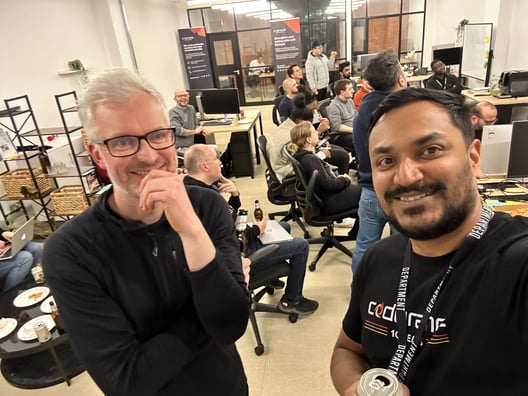Our co-founder Sandro Mancuso participated in an Panel of Experts during the Digital Enterprise Show 2022 in Malaga, which analyzed the role of the Chief Information Officer (CIO) within an organization and the importance of its alignment with the business strategy.
As technology becomes more relevant as a business differentiator, the CIO must demonstrate agility and move from a functional role to become a strategic business leader.
Mancuso was joined on the panel by José Carlos Alva from Kyndryl Spain and Portugal, Ana Peñuela, Partner Technology Enablement at KPMG and Nacho Arrieta, Solutions Engineering Director at VMware - Iberia.
The panel began by shedding light on a key question: what is the role of a CIO within a company? The answers centered on the key position that this role has in being an agent of communication and understanding between the technological world and the more strategic vision of the company. The CIOs need to unify both areas so that neither is understood without the other and both seek to meet a common goal. They have to think beyond a specific task or objective, having a global perception of how technology benefits all stakeholders and customers.
"CIOs are people who understand the total flow of information and are in a unique position to be that bridge between business and technology, because they understand both worlds."
- Sandro Mancuso.
How does the CIO influence a transformation process?
The idea that became clear is that CIOs occupy a key position and, therefore, they have to lead upwards and downwards. Upwards because they have to justify the transformation or change that is going to be implemented and how that investment will benefit the overall dynamic of the company. Then downwards, because that is where most of the challenges are, when that transformation is approved, it has to be executed and made effective.
Technology should be for the sake of the business, not just for the sake of the technology. CIOs can showcase the capabilities of that technology and how it benefits business performance. They have to be visionaries, translate an idea into something feasible and realistic, and get all parties on board with the transformation and aligned to a common goal.
Alignment levels
Mancuso explained that there are several fronts to consider when seeking alignment and that CIOs must be able to identify them and find common ground that suits all parties. He described some of these levels:
- Understand the problem. Agree that the problem or issue is the same for everyone. Once everyone understands what is blocking the business, they can look for solutions in the same direction.
- Impact. Know how your department's initiatives impact others and how they affect your operations as well. That conversation needs to be upward and downward, sustained and clear.
- Differentiate. Identify which problems or difficulties are related to the technology or are specific to the business. For example, if your business is seasonal, the technology serves that purpose, but in itself the operation and dynamics of the business are given by its very nature.
"The main skill of the CIO is to be agile enough to understand the information he or she has at different levels and develop a way to transform those messages so that other people, who don't have the same background, can understand it."
- Sandro Mancuso
The decisive role of CIOs and their versatility, management skills and agility are very necessary and key in dealing with crisis. Participants stated that the pandemic was a time when this role became crucial. At first it was a reaction to the uncertainty of what was happening, but after a while CIOs had to take a more proactive role in the design and reorganization of processes. Identity management at the enterprise and team level has been key to the success of companies today.
The role that a CIO can play in the ESG strategy was also discussed. It was noted that there are several ways to contribute, but the one chosen must make business sense, which is where the CIO plays a key factor. Mancuso mentioned that there are several ways to support ESG strategies and that they can take different forms and be tailored to each industry. For example, at Codurance we try to contribute to the community of technology professionals by offering paid apprenticeship through our Academy Program.
Recommendations
The panel concluded with advice from each of the participants for those in the CIO role:
- "Three big challenges: being a strategic partner, data and security, and ESG".
- Ana Peñuela
- "Being able to lead up and down, understand the technology and business issues and make sure there's a connection. Use the tools you have to create change".
- Sandro Mancuso
- "Don't be afraid to embrace technology and new challenges. Understand the real needs of the business and what technologies work best".
- José Carlos Alva
- "Know the business and the team, be blunt, have a vision, break things and wear sneakers".
- Nacho Arrieta




